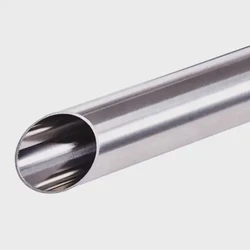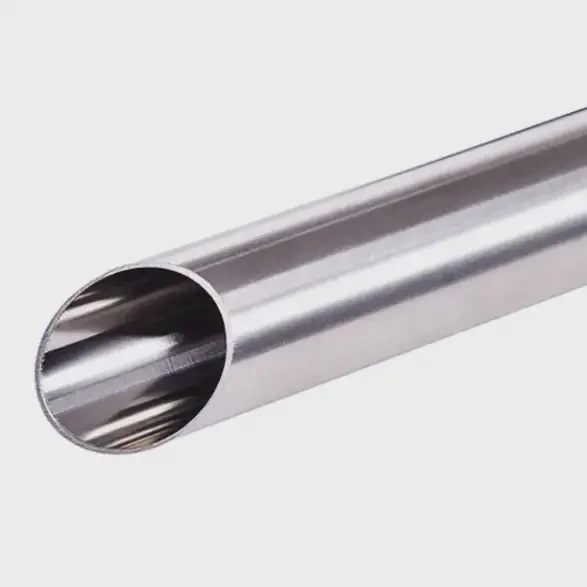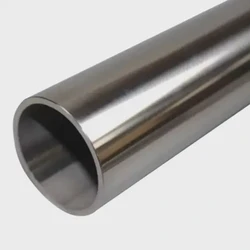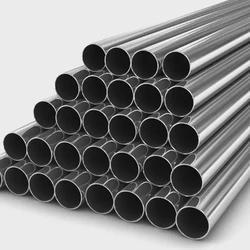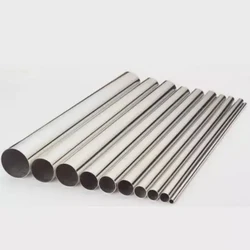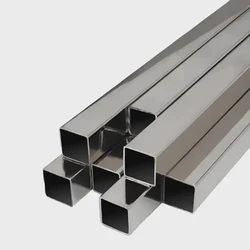ASTM A270 Stainless Steel Pipe
We offer ASTM A270 Stainless Steel Pipe and related grades with 100% factory direct pricing and free quotes available within 6 hours.
ASTM A270 is a specification standard that governs the manufacture of stainless steel pipes primarily used in the food, beverage, pharmaceutical, and dairy industries. This standard covers pipes that are designed to withstand rigorous environments, where cleanliness, durability, and corrosion resistance are critical. Stainless steel, specifically types 304 and 316L, is most commonly used under ASTM A270 due to its resistance to oxidation, corrosion, and staining, making it the ideal material for sanitary applications. These pipes are designed for the transport of liquids and gases in systems that require hygienic conditions.
1. What is ASTM A270 Standard?
ASTM A270 is a specification standard issued by ASTM International, a globally recognized organization for setting standards. This specification pertains to seamless and welded stainless steel pipes designed for sanitary applications. It primarily applies to pipes used in industries such as food processing, pharmaceuticals, and dairy, where hygiene and resistance to corrosion are crucial. The pipes manufactured under ASTM A270 are tested to meet stringent quality controls, ensuring their durability and suitability for critical environments.
2. Types of Stainless Steel Pipes Under ASTM A270
There are primarily two types of stainless steel pipes manufactured under ASTM A270:
-
Seamless Pipes: These pipes are made from a solid billet of stainless steel, which is heated and extruded into a pipe without any seams or welds. Seamless pipes are ideal for high-pressure applications due to their uniformity and strength.
-
Welded Pipes: These are made by welding two steel strips together, which allows for a continuous, cost-effective pipe production method. Though they are generally more economical than seamless pipes, they can be less durable under extreme conditions.
3. Applications of ASTM A270 Stainless Steel Pipe
ASTM A270 pipes are widely used in industries that require high standards of cleanliness and resistance to corrosion. Common applications include:
-
Food and Beverage Industry: These pipes are ideal for the transportation of liquids such as water, milk, juices, and other consumable goods that require contamination-free environments.
-
Pharmaceutical Industry: Used in the transport of chemicals and drugs, ASTM A270 stainless steel pipes maintain the purity of sensitive materials.
-
Dairy Processing: The dairy industry relies on ASTM A270 pipes to meet hygiene standards while efficiently transporting milk and related products.
4. Material Grades: 304 vs 316L
The most common stainless steel grades used under ASTM A270 are 304 and 316L. Here's a comparison:
| Feature | 304 Stainless Steel | 316L Stainless Steel |
|---|---|---|
| Corrosion Resistance | Good, but less resistant to chlorides | Excellent, highly resistant to chlorides |
| Cost | Lower | Higher |
| Applications | General-purpose use in food and beverage | Used in more aggressive environments like pharmaceuticals and marine |
| Weldability | Easy to weld | Excellent weldability with resistance to sensitization |
| Molybdenum Content | 0% | 2-3% |
5. Manufacturing Process of ASTM A270 Pipes
The manufacturing process of ASTM A270 pipes typically involves the following steps:
-
Melting: Raw stainless steel is melted in an electric arc furnace.
-
Forming: The molten metal is formed into a cylindrical shape through extrusion for seamless pipes or rolling and welding for welded pipes.
-
Heat Treatment: Pipes are heat-treated to achieve the desired mechanical properties and to remove any stresses.
-
Pickling and Passivation: The pipes are pickled to remove any surface impurities and passivated to enhance corrosion resistance.
-
Hydrostatic Testing: Each pipe is tested for leaks by applying water pressure.
6. Advantages of Using ASTM A270 Pipes
There are several advantages to using ASTM A270 pipes, particularly for sanitary applications:
-
Corrosion Resistance: Stainless steel naturally forms a protective oxide layer, which resists corrosion in most environments.
-
Hygienic Properties: The smooth surface of ASTM A270 pipes makes them easy to clean and sterilize, which is essential in sanitary industries.
-
Durability: Stainless steel is highly durable, offering long service life and resistance to extreme temperatures.
-
Versatility: The pipes are available in a variety of sizes and grades to suit different applications.
7. Corrosion Resistance and Durability
Stainless steel is known for its exceptional corrosion resistance, especially when compared to carbon steel. The chromium content in stainless steel reacts with oxygen to form a passive layer that protects the pipe from further oxidation. ASTM A270 pipes, especially those made from 316L grade, offer superior resistance to chlorides and other aggressive chemicals, making them ideal for applications in environments exposed to corrosive substances.
8. Case Study: Application in the Dairy Industry
A well-known dairy processing plant in Europe adopted ASTM A270 stainless steel pipes for their milk transport system. Due to the high hygiene standards required in the dairy industry, the plant needed pipes that were resistant to milk’s corrosive properties and easy to clean. By switching to ASTM A270 pipes, the plant reduced contamination risks and extended the lifespan of their piping system by over 40%, cutting down maintenance costs significantly.
9. Comparison Table: ASTM A270 vs Other Stainless Steel Pipe Standards
| Feature | ASTM A270 | ASTM A312 | ASTM A358 |
|---|---|---|---|
| Pipe Type | Seamless and welded | Seamless and welded | Welded |
| Usage | Sanitary applications | General applications | High-temperature service |
| Corrosion Resistance | High | Moderate | Moderate |
| Temperature Resistance | Up to 800°F | Up to 1000°F | Up to 1200°F |
| Surface Finish | Smooth | Smooth or rough | Smooth |
10. Frequently Asked Questions (FAQ)
1. What is the primary use of ASTM A270 stainless steel pipes?
ASTM A270 pipes are primarily used in industries that require sanitary conditions, such as food and beverage, dairy, and pharmaceuticals.
2. How does ASTM A270 compare to ASTM A312?
ASTM A270 is used for sanitary purposes, while ASTM A312 is a general-purpose pipe standard, typically used in higher-pressure systems.
3. Can ASTM A270 pipes be used for high-temperature applications?
While ASTM A270 pipes are resistant to corrosion, they are not typically used in high-temperature environments. For high-temperature applications, ASTM A358 or A312 may be more suitable.
4. What are the advantages of using 316L grade over 304 grade?
316L offers superior corrosion resistance, particularly against chlorides, making it ideal for more aggressive environments like marine and pharmaceutical industries.
5. Are ASTM A270 pipes easy to maintain?
Yes, ASTM A270 pipes are easy to maintain due to their smooth surface, which facilitates cleaning and reduces the buildup of contaminants.
Conclusion
ASTM A270 stainless steel pipes play a critical role in industries where hygiene and corrosion resistance are of paramount importance. With their superior durability, resistance to corrosion, and ease of maintenance, they are an ideal choice for food processing, pharmaceutical, and dairy industries. By understanding the specifications, material grades, and applications of these pipes, companies can make informed decisions that will ensure the longevity and efficiency of their systems.
Packing And Delivery

OUR FACTORY





CUSTOMER VISIT

HONOR


Recommended Products
Send Inquiry
